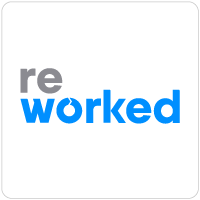Company Culture in the Digital Workplace
Healthy company culture is one of the constants of successful businesses; creating better collaboration, design-thinking, leadership and engagement. The spotlight is on culture these days because of its relationship to the digital workforce and the ability to drive progress. Gains in a company’s bottom line can now be tracked and measured for job fulfillment, employee satisfaction and increased collaboration within the organization.
Organizational culture is the collective result of how team members think and behave, their shared values and how they react to internal and external stimuli. A company’s culture can improve the happiness and productivity of both employees and customers. The trend today is that business culture is moving from a hierarchical structure to a more networked one. The results of this new trend encourage innovation and beneficial risk-taking.
Where Does Company Culture Begin?
Often company culture is proactively created and nurtured from the start or – more typically – it is more organic and develops over time through the beliefs and experiences of those on the team. To instill and drive the right culture, it is necessary to have both organic and proactive development furthering the positive evolution of your company’s culture, values and message.
Identifying your Company Culture
Organic culture just happens, and when it’s great, it’s a huge win. Proactive culture takes a bit of effort. While it is helpful to write down your mission, vision, values and purpose, if your leaders are not exemplifying those values through their activities, a written statement will do little good. Any aspirational culture must be present in all of its actions, both internal and external. Then you pave the way to have meaningful values written out and a mission statement your employees can feel confident about.
Once your ideas are in writing and senior leaders have approved it, your statement will guide decisions, recruiting efforts, training, performance and expectations. But also keep in mind that it’s not just about approvals. It’s about implicit and explicit expectations and maintaining a sense of accountability to agreed-upon structures. These structures make suppositions go from subjective to more measurable.
Values-Based Leadership
An organization’s values should be the foundation of a company’s existence and how it makes decisions and determinations.
Leaders can use well-articulated values to drive performance, especially in times of change, and they can evaluate performance against their set of values rather than specific metrics and milestones. Many internal judgments about culture can impact external decisions as well, specifically customer-facing efforts. Favorable results with company culture can easily spill over into the public perception of the brand.
Communicating Corporate Culture
According to Deloitte’s 2017 Global Human Capital Trends report, 86% of respondents viewed corporate culture as crucial or very crucial to business success. However, even though so many believe their company’s culture is key, only about 12% said they think their company is “driving the right culture.” And a mere 28% said they understand their organization’s culture.[1]
Leadership needs to communicate values at every opportunity possible to maintain a consistent cultural environment, especially in times of cultural change for the organization. That means stressing their values during each company meeting, whenever an employee is publicly recognized and in every coaching moment when mistakes happen.
To help clarify your company’s culture, contemplate and discuss some of the currently accepted behaviors in the organization that you’re not happy with, and the beliefs or values from which they might arise.
A leader might clarify culture by defining core values by stating what is relevant to them, through conducting business and employees’ interactions with each other. Then they will decide how to live those values.
Deciding how you want the values to show up as patterns of accepted behavior allows you to use them practically throughout the employee journey: in hiring, promoting, developing and parting with employees. As employees move through the process of recruitment to the end of their time as an employee is imperative to recognize in more depth than you may have in the past.
With the growing expectations and needs of diverse generations such as Millennials in the workforce, your company must provide a positive experience, preferably one that takes a holistic approach to the entire employee experience. Journey maps and design thinking are some of the tools HR departments are using today to accomplish this.
A Collaborative Culture
Leaders set the tone for how their workplace operates and influences the culture. If you’re an HR leader or striving to be an effective leader in another department, developing sound employer/employee relationships is a valuable aspect of brand building. From the very first touchpoint of a referral or recruiter email to a phone meeting with a career coach following a layoff or transitioning into retirement, all of these steps need support so individuals from all backgrounds can thrive. Employees look to corporate leaders to set a precedent in the office and keep them engaged. Unfortunately, some leaders are unaware of the best practices for fostering a solid culture within their organization.
Collaboration and idea-sharing are vital to the success of businesses today, as they feed innovation. Ideas developed by teams of three or more people have 156 percent greater appeal with consumers than those developed by teams where just one or two people have played a hands-on role, according to a 2016 Nielsen report. [2]
To create a more collaborative culture, nurture cooperative skills by making it easier for employees to collaborate via implementation of software, programs and opportunities. Quarterly collaborative events, for example, might spur workers to have more enthusiasm toward combined efforts on a daily basis.
Here we have distilled down the best practices for fostering a positive culture into their most fundamental elements. This will help your organization begin to strategize on how best to implement a better sense of the very beneficial values of accountability, respect, transparency, humility and communication.
Best Practices for Fostering Positive Culture Include:
-Accountability
There are three types of accountability: hierarchical, cultural and personal. Hierarchical accountability, where the corporation tries to hold workers accountable can backfire if employees feel that is heavy-handed. Cultural accountability has more of a peer-to-peer execution, and if the company culture is adequately developed, there can be a more consistent long-term impact. Personal accountability happens when employees walk across hot coals themselves instead of having their feet held to the fire. To help foster this kind of team accountability, leaders should hold themselves accountable and lead by example. Team members are likely to lose motivation and resent those bosses who saddle them with the blame.
-Respect
Aretha Franklin spells out the importance of R-E-S-P-E-C-T, but are you considering the importance of respect in various levels of your organization? For instance, starting with candidates hoping to work for you, examine how they are treated and try to be respectful of their time. Are your leaders doing the right things to earn the respect of their subordinates or are they commanding unearned respect? Look at their proof of performance as a guide for improvement. Are the employees at the lowest levels of your org chart doing the right things to engage with their co-workers and interact in ways that gain them respect in the workplace? Look to your company culture for helping to instill the right core values like patience, self-confidence and avoiding company gossip.
-Transparency
Businesses need to be upfront and honest. Transparency is a vital ingredient in the future of workplace experience and happiness on the job. Visibility into your company’s processes also increases customer satisfaction. To increase transparency, make sure you’re getting easy wins by doing things like keeping an open door, doing informal check-ins and creating employee message boards and forums. You can also share the company’s financial data, involve employees in decision making and make sure you are using the latest technologies for effortless communication between co-workers. Your commitment to transparency needs to be displayed by everyone in a leadership role within the organization.
-Humility
Integrity and humility in leadership help drive organizations from a position of strength. What defines your company’s leadership style? Basic humility can be summed up by thinking of yourself less and of others more. That means owning up to losses as well as celebrating wins. Humility builds trust and loyalty and enables honest, forthright dialogue. This helps leaders embrace growth opportunities and change course where necessary. Humility allows learning and creates space for others to contribute as well. A more altruistic style that involves risk for the greater good is rewarded with new ideas, more proactive problem solving and innovation. Humility is also one of the elements of creating a comfort level within a diverse team and helps teams embrace uncertainty.
-Communication
Are you communicating adequately? If you’ve worked hard to create beneficial programs for employees, they need to understand what they are and how they can participate for you to achieve your overall investment goals in your programming efforts. A concrete, actionable step is to reinforce positive behavior and praise those who are doing excellent work in a timely fashion. What you say should align clearly with your culture and values, and it should go beyond merely posting up a flyer on the wall. Back and forth discussion that infiltrates into the daily experience is the new answer for practical communication. Go the extra mile, and it will pay off. Communication that is appreciative and encouraging and celebrates the embodiment of company values builds well-founded culture.
Putting these best practices in place will create greater harmony internally, and it will also have a positive impact on the company’s bottom line.Leaders need to be willing to take risks, collaborate, and learn from others; particularly those they lead. Failure to do so could stifle innovation within the organization. Putting clients and customers at the forefront of their initiatives inspires others to do the same.
Communication in Today’s Workforce
To enable communication in today’s workforce, you need an environment in which teams voluntarily pull together to find common ground. This is critical regardless of the current state of your company culture. In the event of a culture clash from things like mergers and acquisitions or an organic culture that has gone awry, emphasizing the positive as well as deepening the bonds between workers is an important priority when building the employee journey.
Also, emphasize two-way communication over a top-down informing style to further organic collaboration. Employees need to understand clearly what the preferred company culture should be and have a voice to see how they fit in. Allowing them to have input into the creation of the culture can raise their sense of having a stake in the company’s future.
Communicating via email can slow down conversations. Consider establishing a more comfortable rapport by initiating regularly scheduled meetings, whether in-person huddles or video calls, to create a feeling of camaraderie. Modern intranets also offer a wide variety of positive communication and internal sharing solutions.
Also, keep in mind that just because conversations are brief, that doesn’t mean they’re clear. Go ahead and use a few extra words to avoid misinterpretations of your email or text. Remote teams need to create communication norms, such as abbreviations, means and response times; and abstain from bombarding each other with follow-up messages.
The New Collaborative, Remote Workforce
The digital era has revolutionized communication. With more interactions happening digitally, people who work in remote teams face regular communication challenges. The modern enterprise structure often includes collaboration with remote employees and teams. However, a healthy culture should apply to and embrace everyone working for the company regardless of where they work. In fact, that is one of the signs you should look for when seeking out examples of robust company culture.
According to recent reports from Gallup and the Bureau of Labor Statistics, 22% of Americans work from home, while about 50% are involved with remote or virtual teamwork.[3] This new shift calls for different skills and behaviors for collaborative work.
Within remote teams, workers are more likely to misinterpret the intended tone of a text or email. Distortions in the more subtle nuances of communication can cause anxiety that impacts costs, morale and productivity. Creating virtual rituals for celebrations becomes meaningful when working with a remote team to help drive a more positive frame of mind. So don’t give up those birthday celebrations of team members just because you’re not all in the same place to enjoy the cake.
There are many things you can do to further collaboration regardless of the location of your employees such as promoting from within, making sure critical departments don’t lose talent and tracking the pathways within the company to leadership roles throughout the journey of promotion. Doing these things can help your employees to be faster problem solvers and respond more quickly to market shifts.
Digital Literacy and Transformation
Digital literacy, digital transformation and especially digital technologies play a large part in a company’s culture. Using currently available digital technologies in the workplace create a more human-focused environment and help drive a positive employee experience. Digital literacy is about upskilling your employees to learn how to use new tools to help them be more productive, and also sometimes changing their preferences. Not all generations have adopted tools like Slack at the same rate even if they know how to use it, and it may take some persuasion to get their buy-in. Encouraging peer-to-peer training will help ease these types of gaps and ensure that all of your employees have the right digital communication skills to engage with one another as well as customers.
In addition to communication tools, a thorough digital literacy initiative should show employees how to avoid cybersecurity risks such as leaving confidential files unprotected and avoiding breaches. As well, employees should be fully aware of company policies surrounding sharing information about clients or the company on social media, any regulations surrounding policy and what sort of information to avoid sharing via email or other places online such as passwords, company credit card information, etc. There should also be a vigilance around keeping these skills up-to-date so staff can stay nimble enough to react to industry changes.
In Summary
Company culture has a significant impact on business success. Leadership’s ability to model the company’s values establishes company-wide behavioral patterns. When those things are going well, customers are happier, and employees will more willingly be productive and proficient. Employee engagement is now about embracing new ways of learning, recruiting, team development, wellness and even acknowledging the physical environment where employees work. When going to work is a curated experience, a company can drive performance through their values and culture.
Sources:
- https://www2.deloitte.com/us/en/pages/human-capital/articles/introduction-human-capital-trends.html
- http://www.nielsen.com/content/dam/nielsenglobal/kr/docs/global-report/2016/how-collaboration-drives-innovation-success-march-2015.pdf
- http://news.gallup.com/businessjournal/206033/america-coming-workplace-home-alone.aspx
Join us June 17th – 19th, 2019 at DWX to learn how to create a health company culture with better collaboration, design-thinking, leadership and engagement.



